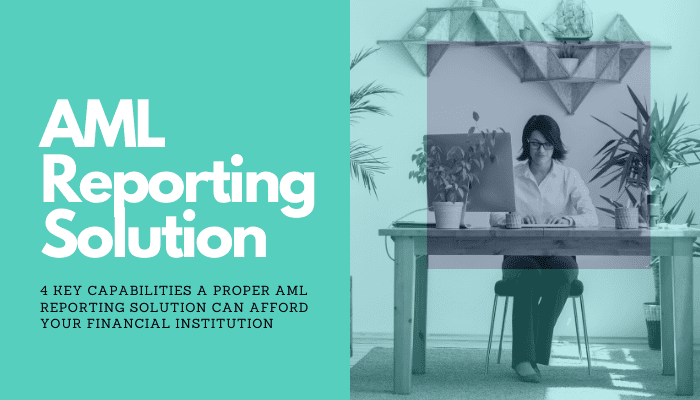In the world of Anti-Money Laundering (AML) compliance, modern problems require modern solutions. As more financial institutions started to implement the bare minimum AML compliance requirements, fraudsters and criminal financiers have likewise become increasingly more sophisticated in their attempts to evade detection.
As with many other things in finance, the bare minimum is rarely enough. Money launderers are often fully aware of the steps financial institutions are mandated to take. The more savvy money launderers, therefore, are often a step ahead when it comes to moving large amounts of dirty money. Unfortunately, if these criminals are allowed to operate for any significant length of time, this could lead to serious repercussions for the affected financial institutions and their stakeholders.
This means any organization serious about maintaining its brand integrity must implement AML solutions that can effectively spot the type of activity modern criminals engage in. Using a proper AML reporting solution can be your first step in preventing and stopping serious money laundering activity.
Here are four key capabilities your organization can gain by adopting a proper AML reporting solution.
1) Better Efficiency
Before the advent of proper AML reporting solutions, tracking criminal activity through transactions was a painstaking and laborious process that often required teams of highly-specialized AML analysts performing what was essentially manual work. These analysts would then have to interpret and present the data so that higher-ups can make decisions.
A good AML system using modern machine learning and artificial intelligence technologies can do much of the heavy lifting by automating processes that were traditionally done manually, such as pattern recognition, relationship tracing, and reports generation. This allows financial institutions to shave off hundreds of hours on routine tasks while simultaneously allowing them to employ smaller teams of AML analysts while abiding by the highest compliance AML standards.
Apart from time and labor savings, this ultimately means that even smaller financial institutions can enjoy the scale and depth of implementation that was previously only available to bigger organizations.
2) Better Pattern Visualization
It’s not just the analysts who can benefit from better AML reporting solutions. Many decision-makers are often dependent on data visualization to give them a clearer understanding of what the raw data means. This means that their understanding of potential fraud and money laundering issues can be highly dependent on the abilities of analysts to present data.
Using proper AML reporting software can take out much of the issues inherent to manually generated reports, such as human error as well as individual quirks and biases towards specific data sets.
Additionally, better software solutions allow the data to be instantly presented in different ways, allowing decision-makers in the organization to have a more three-dimensional understanding of the problems at hand.
3) Simplified Relationship Tracking
Related to the previous point, money launderers will almost always attempt to avoid detection by building convoluted account networks. Because of the human-centric nature of traditional AML solutions, this type of obfuscation was, and still is, often effective, especially when employed at organizations that do not take AML seriously.
Good reporting software makes it simple to quickly uncover accounts related to possible criminal or terrorist activity by automatically tracing relationships and creating simple-to-understand visualizations.
When set up correctly, the relationships between individuals, shell companies, and other entities could be easily uncovered when using reporting software. This makes it possible for AML teams and the authorities to quickly find out if any preventative or regulatory action is necessary.
4) Reliable Risk Assessment
Not all transactions that are flagged are necessarily the result of criminal or terrorist activity. In fact, depending on how an AML system is set up, only a minority of flagged transactions and accounts may have anything nefarious behind them.
This means that overly sensitive AML systems may frequently flag innocent transactions and accounts. When not handled well, this flagging can result in a negative customer experience, ultimately causing customers to go with competing institutions.
In any case, better AML reporting solutions dramatically reduce these false flag incidents by offering more in-depth analysis. They also make it possible for decision-makers to quickly and accurately analyze flagged accounts, customers, and transactions to see what probable risks there are, if any, in letting them continue to operate. When set up properly, an AML reporting system can improve security without negatively impacting most account holders’ experience.
It’s Time to Take AML Reporting Seriously
Financial institutions should refrain from thinking of AML reporting software in terms of minimum compliance. When the AML reporting solutions are properly selected and set up, they don’t just provide a way of meeting regulatory requirements, they can also save time, reduce overhead costs, and shield your organization from potential liabilities.



































